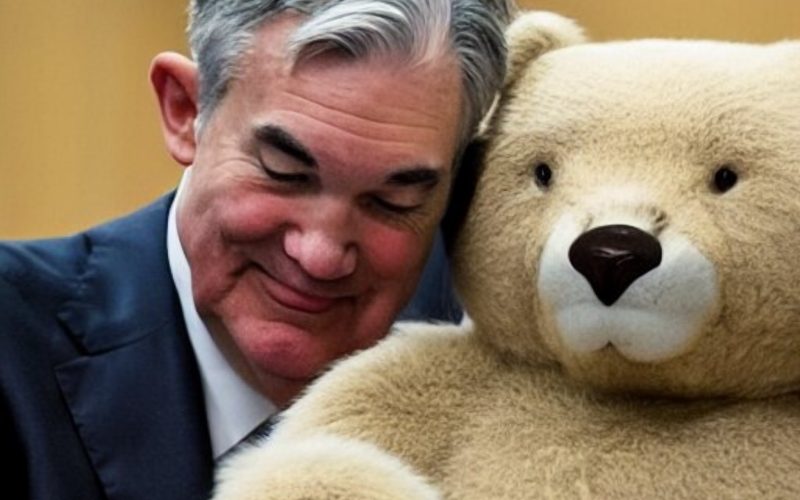by Hubert Marleau, Market Economist, Palos Management
November 5, 2022
Two weeks ago, Nick Timiraos, known on Wall Street as the Fed Whisperer, wrote in the WSJ that the Fed’s rate-setters would raise the policy rate another 0.75%, but would likely tame future hikes. On November 2, the Federal Open Market Committee (FOMC) did exactly that. It increased the target rate range by 0.75% to 3.88%, as its Chairman had primed markets to expect, and indicated that future rate increases, if any, would be moderate.
Those investors who view the FOMC as a body of economists, cheered its message because it had said officially that future decisions would rest on whether the cumulative 375-point increase in the policy rate would produce, as economic theory as well as usual lags suggests, the desired effect on inflation. Stock and bond prices surged because it appeared as if the economic models that the Fed uses foreshadowed not merely a moderating pace of rate increases but also a possible full stop later in 2023.
However, those investors who view Jerome Powell as a lawyer, did not like the message he gave the press, which contradicted the official statement. Without any hedges, he suggested the terminal rate needed to be higher than originally expected. He swatted away Wall Street's frets about overtightening into a U.S. downturn, and rebuked foreigners who feared that the strength of exporting inflation through the U.S. dollar would plunge the global economy into a recession.
As a result, the rally was short lived and stocks and bonds promptly fell. By the end of the week, the S&P 500 stood at 3771, registering a weekly loss of 130 points or 3.3%. This, however, could be an attractive entry point.The recession is the most anticipated downturn that has not officially happened. The current bear market started last January, 305 days ago. According to Yardeni Research, bear markets last, on average, around 340 days. In the end, however, stock prices are determined by forward earnings. Industry analysts’ annual estimate for 2023 is $238.78. Forty-five days from now, forward earnings should be giving increasingly more weight to analysts’ estimate for 2024, which is currently $258.03.
I do not disagree with the notion that the final resting place for the policy rate is what it's all about. The big question is what the terminal rate will be in relation to the neutral rate (4.25%) down the line. That hinges on inflation and growth. This is why the Fed is downshifting to quarter-point increments. It gives the monetary authorities time to assess their impact and a better chance of avoiding policy mistakes. They surely do not want to swing from one uncomfortable place (high inflation) to another (no growth). Unfortunately, Mr. Powell did not offer concrete explanations on either count, other than saying that he wants lower inflation. Who doesn’t? Put simply, his message was incomplete, which means that the tightening cycle is still up in the air, making it difficult to reconcile his rhetoric with the fact that inflation has already peaked.
The bottom line is that the popularity of Jerome Powell is waning. If the downward trend in inflation accelerates, (as I expect), the data and the market will combine to force Jerome Powell, the Fed’s economic impersonator, to reconsider the idea of more rate hikes. A wargame with the Fed’s chief would then be likely. The market will not always be oblivious to the significance of the ongoing shrinkage of the Fed’s $4.0 trillion balance sheet. A reduction of $2.5 trillion is in the cards. That is equivalent to an additional 0.75 to 3.00 percentage points of tightening, depending on who you ask.
In this connection, Wall Street will continue to search intensively for signs and clues that will tell if the fall in inflation turns out to be sustainable and the soft landing real. Based on recent economic prints, however, so far so good. The October job report showed that while employment growth is slowing, the economy continues to add workers at a reasonable clip, defying recessionary concerns. On the heel of falling factory output, the large service sector of the economy is producing healthy activity.
Meanwhile, the October ISM Price index registered 46.6%, down 5.1% compared to the September figure of 51.7%. This was the index’s lowest reading since May 2020. The New York Fed’s Underlying Inflation Gauge (UIG) and Global Supply Chain Pressure Index (GSCPI) - two indicators which should not be ignored as being good at predicting inflection points - are strongly suggesting that high inflation is abating and the trend is changing for the better. The latter’s year-to-date movements indicate that global supply chain pressures are falling back in line with historical levels.
There is also some encouraging news on the labour front. Private hourly wages rose 4.7% from a year earlier, but they have decelerated to an annualised rate of 3.9% over the last three months. Given that productivity has averaged around an annualised rate of 1.4% since the end of 2019, the economy could tolerate an annual 3.4% wage rate increase to meet the price stability target of 2.0 %.
Copyright © Palos Management















